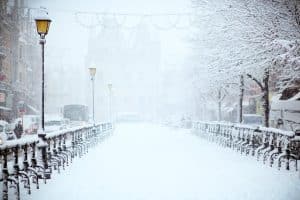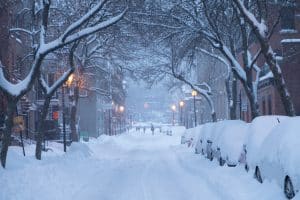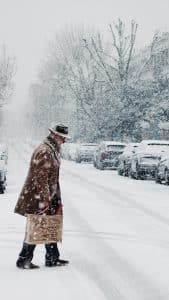
Weather forecast models are sharing their predictions for the 2022-2023 winter season, from anticipated temperatures to projected snowfall amounts. Based on a few models, the U.S. will have an especially cold and snowy winter in the coming months. What is this based on, and what’s causing this?
Right along the equatorial Pacific Ocean is an area called ENSO, where major weather changes across the span of one to three years, oscillating between warm and cold; these phases are El Nino and La Nina respectively. Right now, ENSO is in the La Nina phase; this will be the third year, so that is already setting us up for a cooler winter. The Farmers’ Almanac has even more information on what to expect this season. Bundle up while we find out what!
The Farmers’ Almanac predicts a cold winter with a lot of snowfall for much of the country
Farmers Almanac is calling for a cold snowy winter….SNOW DAYS 😂 pic.twitter.com/xihpvFtqUp
— Tony Scott (@tony516scott) October 10, 2022
So far, The Farmers’ Almanac predicts an especially cold winter for the North Central part of the U.S. Temperatures are expected to reach their coldest around mid-January. This extends to the northeastern and Great Lakes areas. Colorado and much of the upper mid-west, meanwhile, was actually classified as a “snow-filled” and “glacial” hibernation zone.
RELATED: This Grandma’s Simple Tip To Help Keep Warm Air Inside Your House All Winter Long
It’s a slightly different case for the southern part of the country. Maps do put the south-central plains into the blast zone of the persistent cold this winter. This can reach as far south as Oklahoma and even Texas. As for snow, the southeast will see a relatively wet winter, with a mix of snow, sleet, freezing rain, and ice. Once again, though, that changes moving left across the country; it is expected to be a slightly dryer winter for the southwest.
What else will be going on with the weather this winter?

There have been plenty of extreme weather events in the past. Few can forget the Great Blizzard of 1978 that hit from the Ohio Valley up into Canada. From Wednesday, January 25 through Friday, January 27, 1978, the region was hit with what is still considered one of the worst snowstorms in U.S. history. Winter doesn’t officially start until December 21, so there’s still time before anything like that is in the forecast.

But to sum up the coming season, The Farmers’ Almanac has one succinct motto: “Shake, shiver, and shovel!” The shovels will be useful for the heavy snow expected in mid-January but we won’t be out of the woods yet because around January 16-23, it’s expected that rain will mix in with the snow, a perfect recipe for icy conditions. Temperatures may reach below 40.
How do you prepare for winter?

